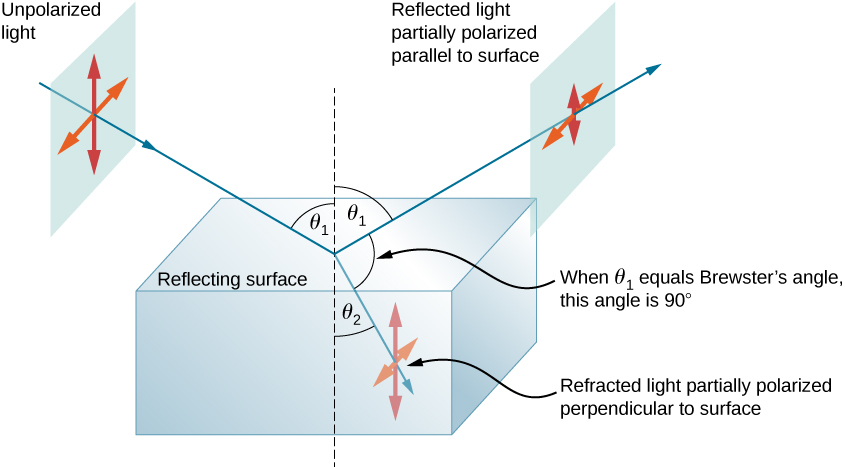| << Chapter < Page | Chapter >> Page > |
This Open Source Physics animation helps you visualize the electric field vectors as light encounters a polarizing filter. You can rotate the filter—note that the angle displayed is in radians. You can also rotate the animation for 3D visualization.
Solving for yields
Check Your Understanding Although we did not specify the direction in [link] , let’s say the polarizing filter was rotated clockwise by to reduce the light intensity by . What would be the intensity reduction if the polarizing filter were rotated counterclockwise by ?
also
By now, you can probably guess that polarizing sunglasses cut the glare in reflected light, because that light is polarized. You can check this for yourself by holding polarizing sunglasses in front of you and rotating them while looking at light reflected from water or glass. As you rotate the sunglasses, you will notice the light gets bright and dim, but not completely black. This implies the reflected light is partially polarized and cannot be completely blocked by a polarizing filter.
[link] illustrates what happens when unpolarized light is reflected from a surface. Vertically polarized light is preferentially refracted at the surface, so the reflected light is left more horizontally polarized. The reasons for this phenomenon are beyond the scope of this text, but a convenient mnemonic for remembering this is to imagine the polarization direction to be like an arrow. Vertical polarization is like an arrow perpendicular to the surface and is more likely to stick and not be reflected. Horizontal polarization is like an arrow bouncing on its side and is more likely to be reflected. Sunglasses with vertical axes thus block more reflected light than unpolarized light from other sources.


Notification Switch
Would you like to follow the 'University physics volume 3' conversation and receive update notifications?